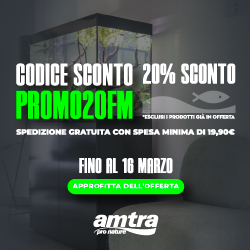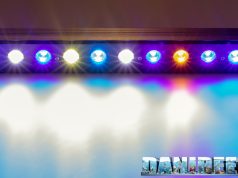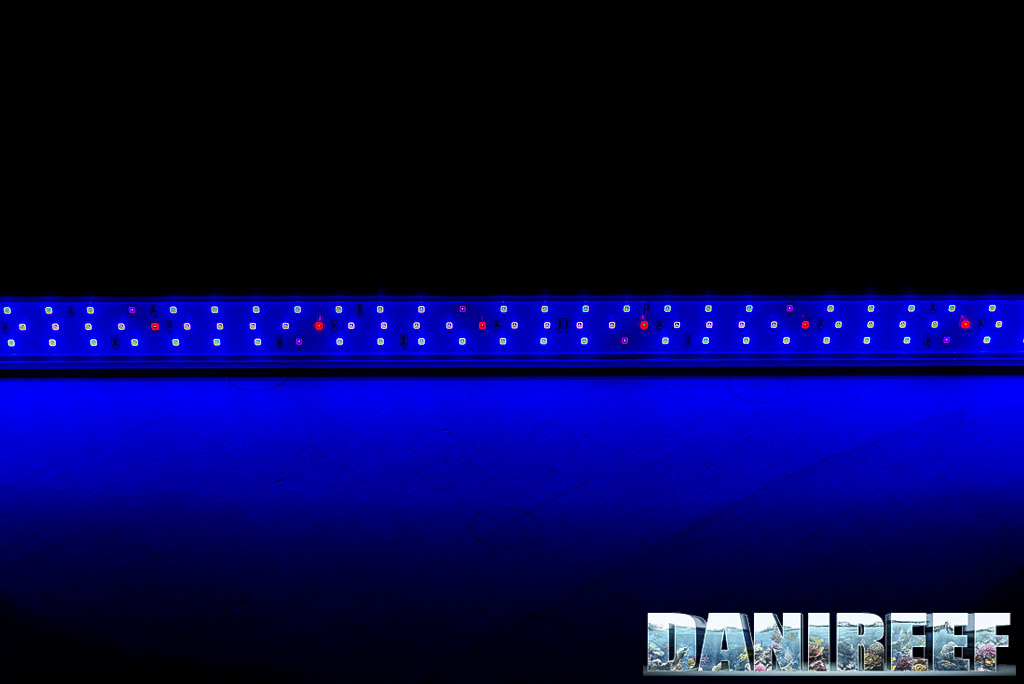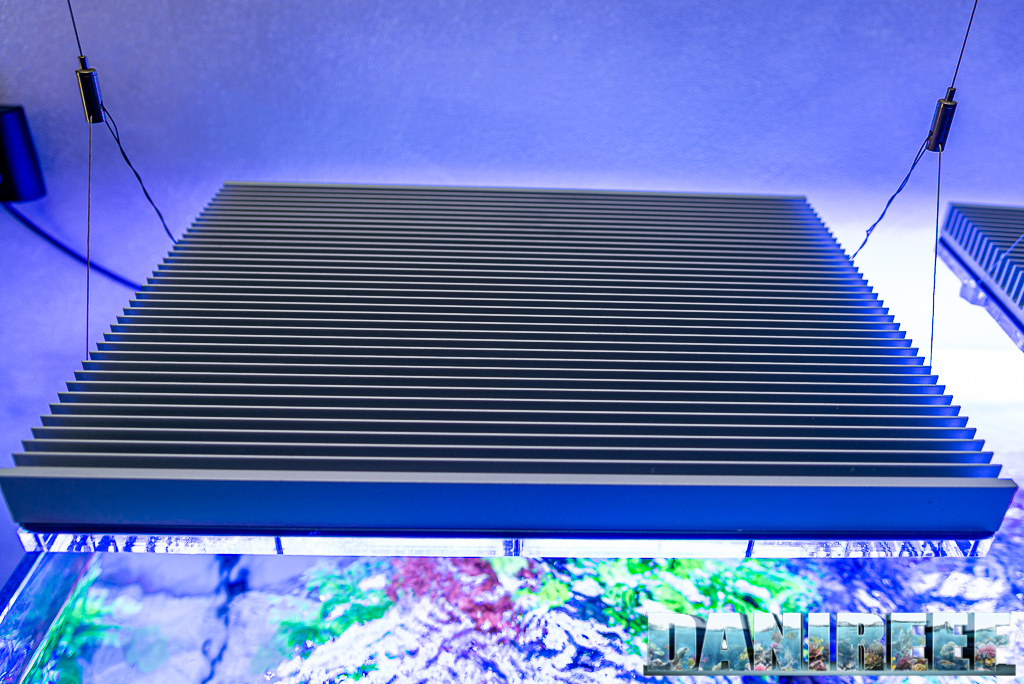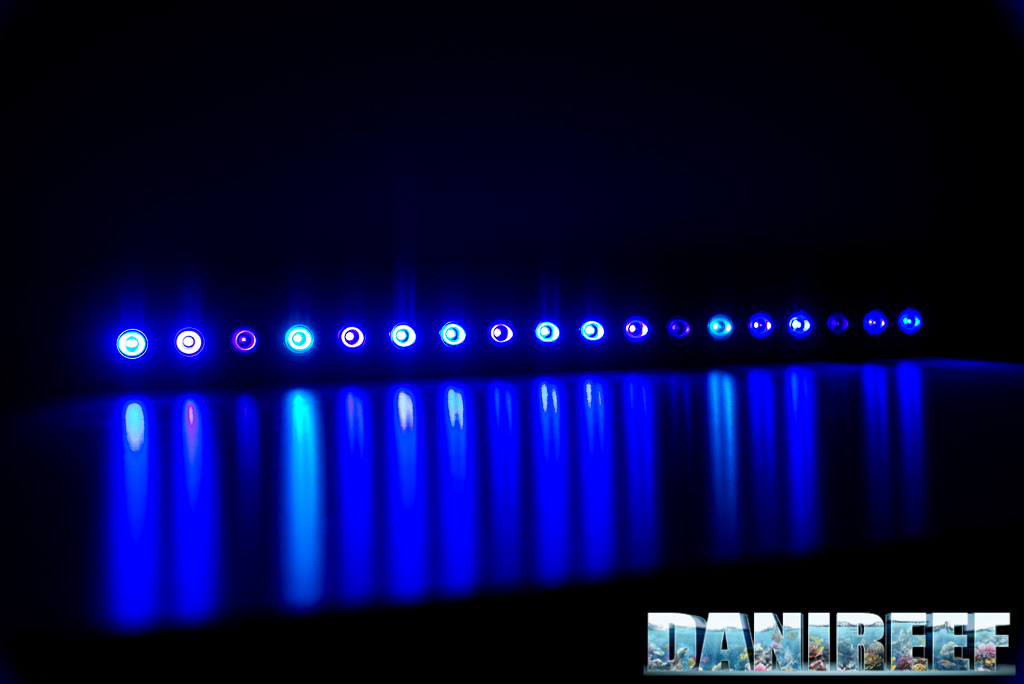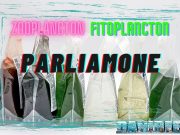
The first time we saw the new Philips CoralCare was at the Interzoo 2016, we immediately liked them and we have been lucky to have them in our aquarium.
This article is also available in: italiano
Back to the Interzoo of 2018 we saw the new version of the Philips CoralCare ceiling lights (article), with the LED slightly different for a color spectrum, more blue-tending, as many aquarists asked.
Technical characteristics of the Philips CoralCare 2018
Each ceiling light has 104 led, as well as in the older version. The absorbed power declared is 190 watt. Obviously, the led are all Philips Lumileds and they’re distributed in this way (the old configuration is in parenthesis):
- 32 Luxeon TX 6500K/70 (before 40);
- 40 Luxeon T Royal Blue (before 32);
- 8 Luxeon UV 420nm (before 16);
- 8 Luxeon Rebel Cyan;
- 8 Luxeon Rebel Phosphor Converted Amber;
- 8 Luxeon Z Blue (there were none).
The two channels in which they are distributed are the following ones:
Channel 1:
- 32 Luxeon T Royal Blue;
- 8 Luxeon UV 420nm (before 16);
- 8 Luxeon Z Blue (there were none).
Channel 2:
- 32 Luxeon TX 6500K/70;
- 8 Luxeon Rebel Cyan;
- 8 Luxeon Rebel Phosphor Converted Amber;
- 8 Luxeon T Royal Blue (there were none).

Dimensions
- Length: 45 cm
- Width: 35 cm
- Height: 13 cm
- Weight: 10 kg
Selling price: 749 euro
Another difference with the previous ones is the possibility to have the external shell in black or white. As you can see from the pictures, I chose the white ones. In the following picture you can see the three colorations on show at the Interzoo of the last year, even if the colors don’t stand out particularly because of the blue light.

The duration

Philips guarantees a long lasting duration for its ceiling light. In fact the Led (of 3 or 5 watts) are powered by a very low current in order to reach over 25.000 hours of work. The specs says that if used in a place with temperatures under 35 degrees, at the 100% of their power, the 90% of the ceiling lights, after 25.000 hours, would still have the 80% of their original power. Every change in those conditions will increase or decrease their duration. The average use of my ceiling light, for example, is of 12 hours, but never at their maximum power. It should be equal to a use of 4 hours a day at their 100%. This would be about 6.249 days of use, almost 18 years. An considering that in my house will never be 35 degrees we could stop worry about the light for a really long time. Also because in that very moment we’ll still have the 80% of power available.
Construction
The Philips CoralCare is excellently build, even if the design isn’t among the most appreciated, in particular in Italy. But we have to remember that the power supply of the ceiling light is inside the shell. This has obvious repercussions on the use. First of all, we don’t have to think about its space, too. And then, they will always work at the best of their possibilities by being in an open space that easily dissipates heat.

The programming
The software is available both for windows and mac, but it doesn’t work with wifi, so you can’t use smartphone or tablet. But this still has some advantages: the programming never jam. You insert the USB cable in the computer (or Mac) and start the app, it works 100% of time.
The software has been planned in order to have the two led channels joined with very specific limits. It’s not possible to make too strange combinations, so to avoid any problem with corals.
There aren’t moon phases, and the minimum brightness, I think, it’s still too high for a night use. You can neither set a period of acclimatation. But considering that we’re talking about distributed light, this shouldn’t be a real problem.

But the programming is extremely simple, and I really mean extremely. Having the security of not doing anything bad is priceless, for a certain type of users. You set the beam on cold and warm colors, you also set the intensity and the time, and helped by the chart you can create the perfect setting.
For example, here above you can see my actual setting. It starts with 11:00 am with just the blue light and at 11:30 am it switch on also the white one. At noon it increase the white light until it maximum at 4:30 pm. And then it decreases, with a bit of residual light at 10:30 pm.
All the values we measured and our working method are on page two.


